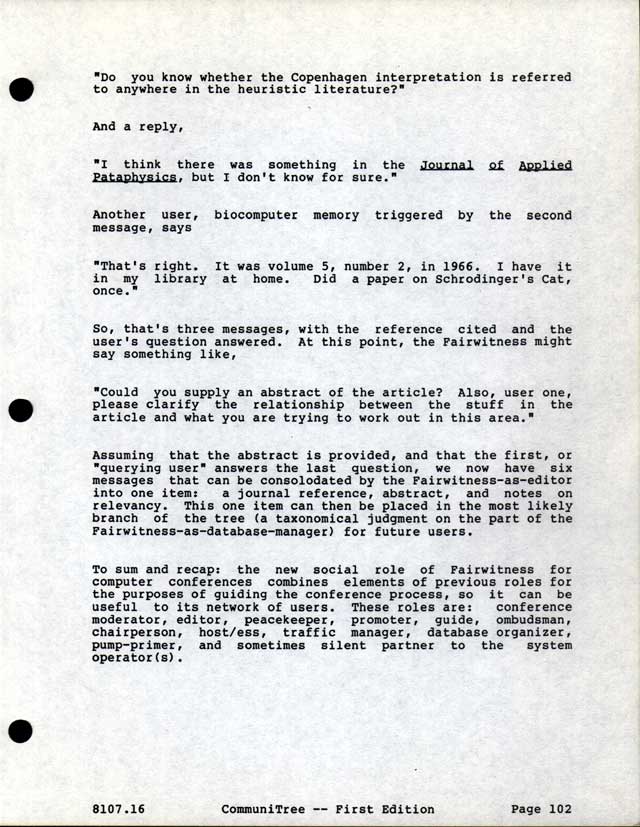CommuniTree

Fairwitnessing
"Do you know whether the Copenhagen interpretation is referred to anywhere in the heuristic literature?"
And a reply,
"I think there was something in the Journal of Applied Pataphysics, but I don't know for sure."
Another user, biocomputer memory triggered by the second message, says
"That's right. It was volume 5, number 2, in 1966. 1 have it in my library at home. Did a paper on Schrodinger's Cat, once."
So, that's three messages, with the reference cited and the user's question answered. At this point, the Fairwitness might say something like,
"Could you supply an abstract of the article? Also, user one, please clarify the relationship between the stuff in the article and what you are trying to work out in this area."
Assuming that the abstract is provided, and that the first, or "querying user" answers the last question, we now have six messages that can be consolodated by the Fairwitness-as-editor into one item: a journal reference, abstract, and notes on relevancy. -This one item can then be placed in the most likely branch of the tree (a taxonomical judgment on the part of the Fairwitness-as-database-manager) for future users.
To sum and recap: the new social role of Fairwitness for computer conferences combines elements of previous roles for the purposes of guiding the conference process, so it can be useful to its network of users. These roles are: conference moderator, editor, peacekeeper, promoter, guide, ombudsman, chairperson, host/ess, traffic manager, database organizer, pump-primer, and sometimes silent partner to the system operator(s).
8107.16 CommuniTree -- First Edition Page 102